Table of contents
TogglePurchasing a used snowmobile can be a bit of a hassle but practical if you want to save some money. Where do you start, what should you look for, and what tests can you perform without too much trouble?
Here’s a list to assist you.
First and Foremost
Don’t hesitate to ask if you can perform some tests on the snowmobile.
- In case of a refusal, express your gratitude and wish them good luck with the sale.
- If the response is positive, take the time to discuss, ask for advice, and find out what the snowmobile in question has to offer.
It is advisable to conduct a mechanical check, a functionality test, and handle some components.
Winter Test vs. Summer Challenge
In winter, a road test is recommended, but in summer, it’s more complicated.
If it’s impossible to conduct a road test, lift the rear of the snowmobile. This way, you can assess its functionality.
Be cautious, as a seller’s reluctance to allow you to test or handle the snowmobile might be concealing potential issues.
Here are some components to check or tests to perform when you have access to the snowmobile.
Mechanical Inspection
Crankshaft Play
Using the primary clutch and your hands, apply pressure for a back-and-forth motion. No play should be felt.
Compression Tests
Required tools: compression tester.
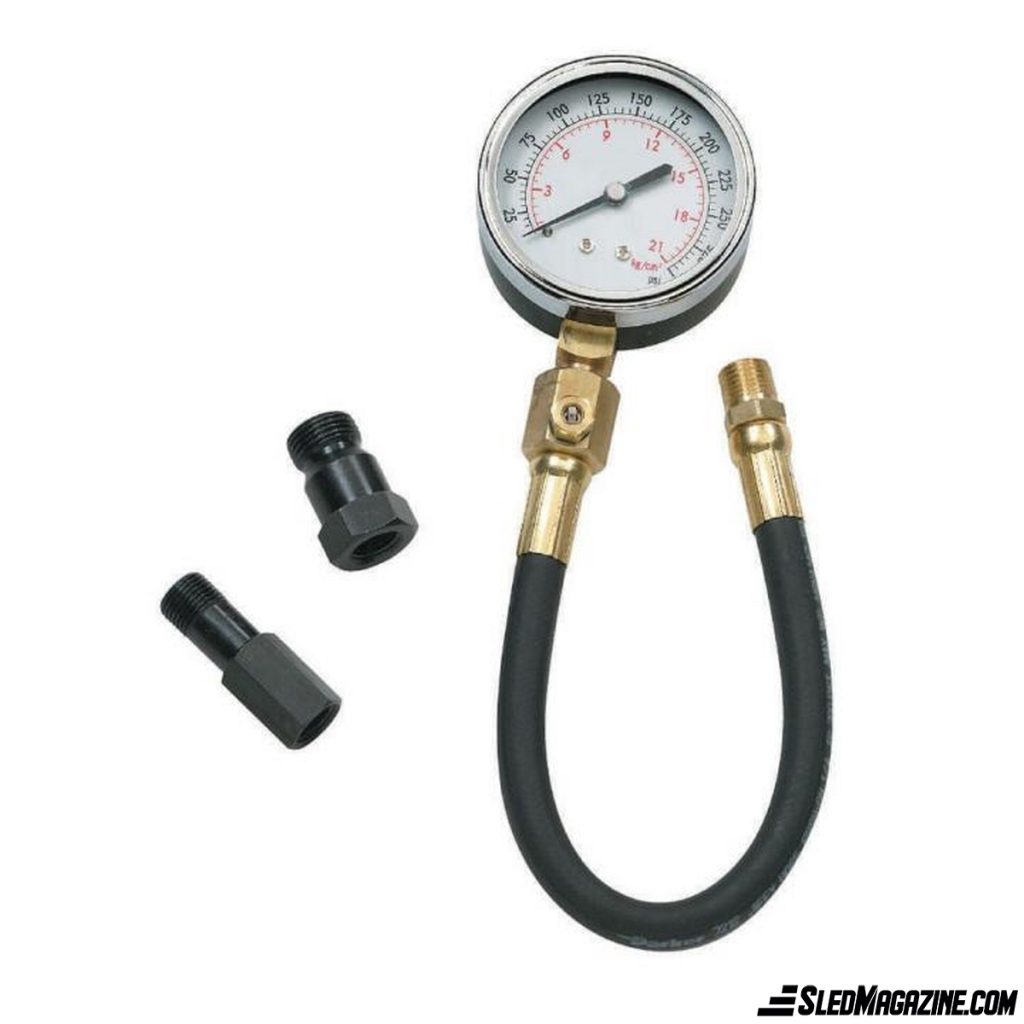
Remove the spark plugs and place a compression tester in their location. Activate the emergency switch (the red button) or turn off the ignition using the starter key. Pull the starter cords 4 to 5 times.
- When cold: Compression may be lower than the manufacturer’s specified value.
- When warm: Compression should meet the manufacturer’s standards.
You can easily find these values online or by asking your local dealer.
Possible Results:
Low compression:
- Piston rings may be sticking in the piston grooves.
- Cylinder wall degradation due to engine wear or age.
- To assess potential damage, add 5 ml to 10 ml of 2-stroke engine oil to the spark plug hole of each cylinder. If compression increases, the piston rings likely need replacement.
- If values remain unchanged, there may be an internal engine issue.
Here’s an idea for conducting this test. You can find a link for a compression test on my YouTube channel.
Compression values may vary from one device to another. Compression values should closely align with those specified by the manufacturer, and they should be consistent for each cylinder.
Visual Inspection
It is recommended to follow the best practice of starting either from the front and moving rearward, or vice versa.
Pulleys and Belts
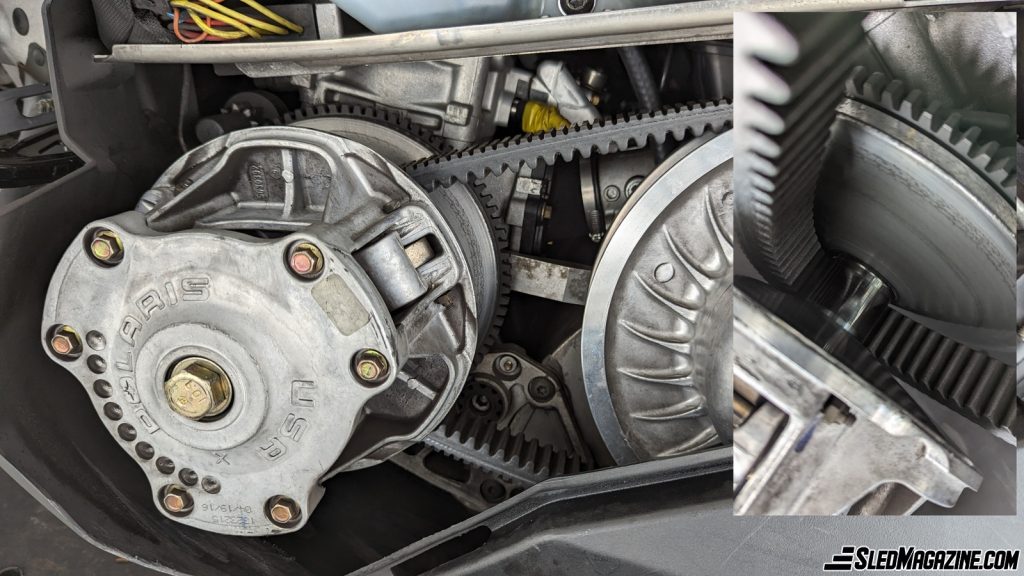
- Primary and secondary pulleys: Check if the springs are not broken and there are no missing bolts.
- The plates should be smooth and clean; some black marks are normal.
- The belt should be in good condition and not cracked.
Coolant Level
- If the reservoir is empty, there may be a leak.
- Internal leak: Damaged engine O-ring or cracked engine hoses.
- External leak: Cracked hoses or a punctured radiator.
Under the Hood
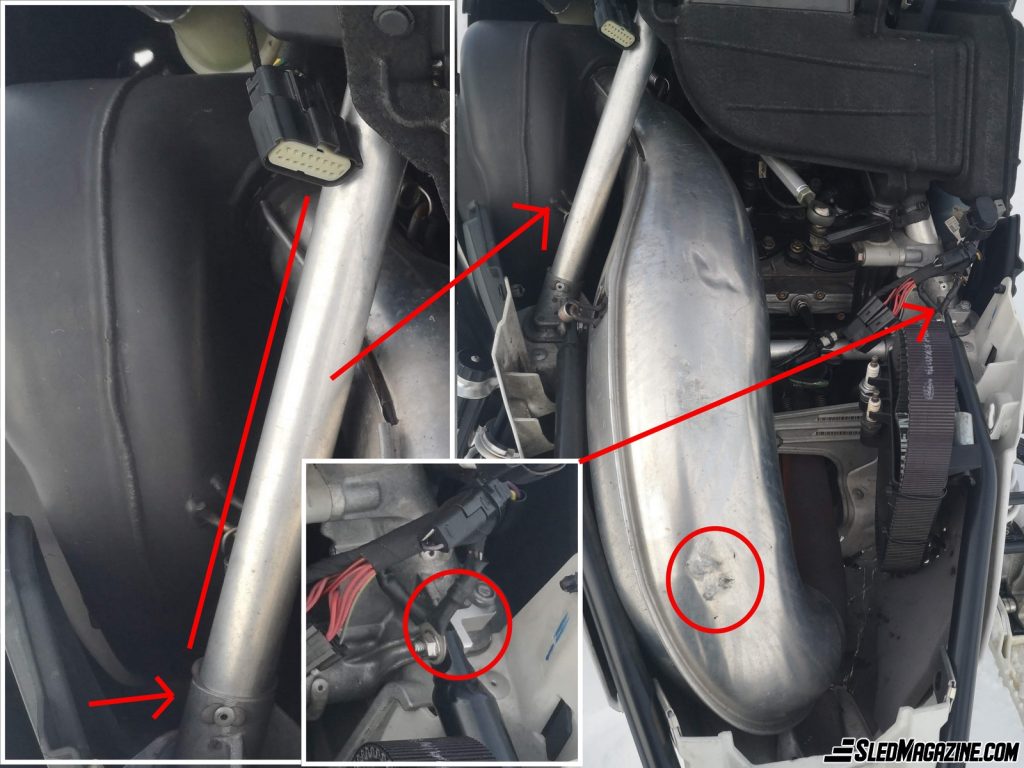
- If the muffler is dented, there is a possibility the snowmobile has been previously in an accident.
- A damaged muffler can lead to exhaust gas leaks and a loss of performance.
- The bumper may have been damaged. Make sure to check if there is a reinforcement installed.
- Front reinforcement rods can indicate a prior impact. Ensure they are straight and intact.
Front Steering and Suspension
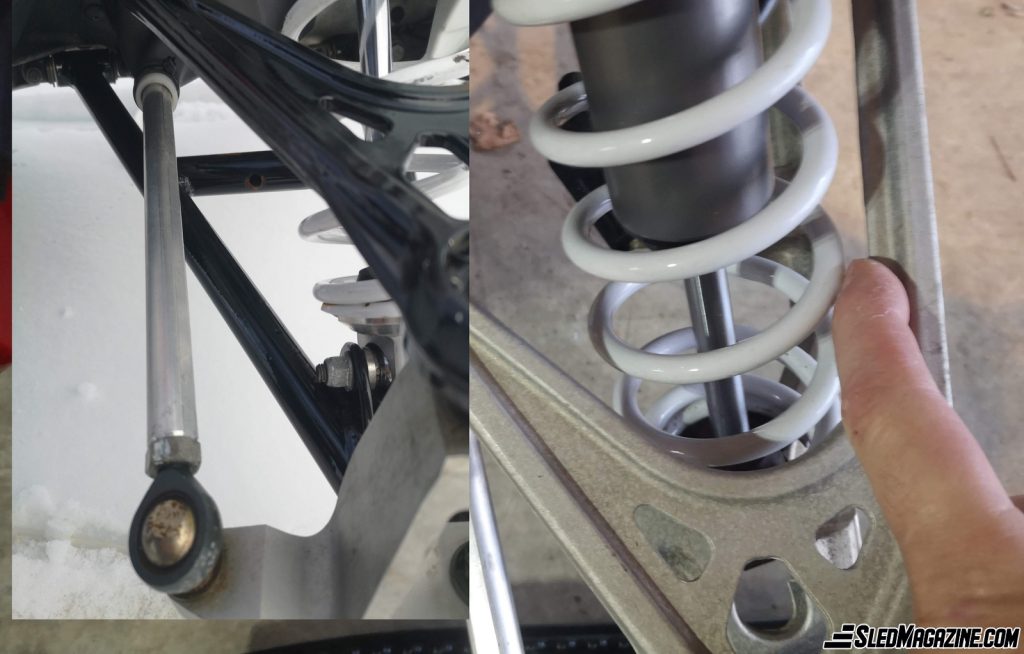
- Turn the handlebars from left to right to ensure an equal range of motion on both sides. Pay attention to potential motion restrictions.
- Examine the steering rods to ensure they are straight and that the ball joints are not twisted.
- Concerning the suspension table, compare both sides. They should be identical, with no signs of impact. Tip: The shock absorber should be centered and not in contact with the suspension arm walls.
- For the shock absorbers, check that the rod is shiny, without rust, and straight. Ensure there are no fluid leaks, and if a spring is installed on the shock absorber, make sure it is not broken.
- Under the skis, make sure they are straight. Compare both sides to assess their condition and wear level.
Rear of the Snowmobile
Rear Suspension
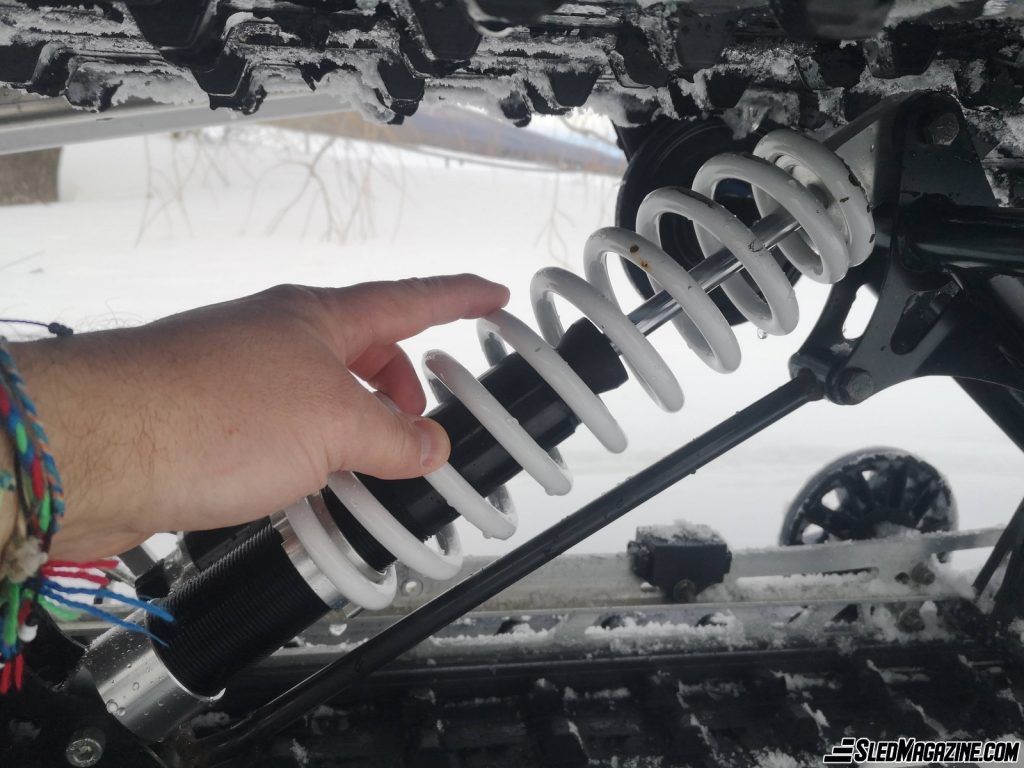
- The shock absorber should be free of rust, and there should be no liquid leakage around the casing or rod.
- The spring should be in good condition.
- Operate the suspension to ensure it rebounds on its own.
The Track
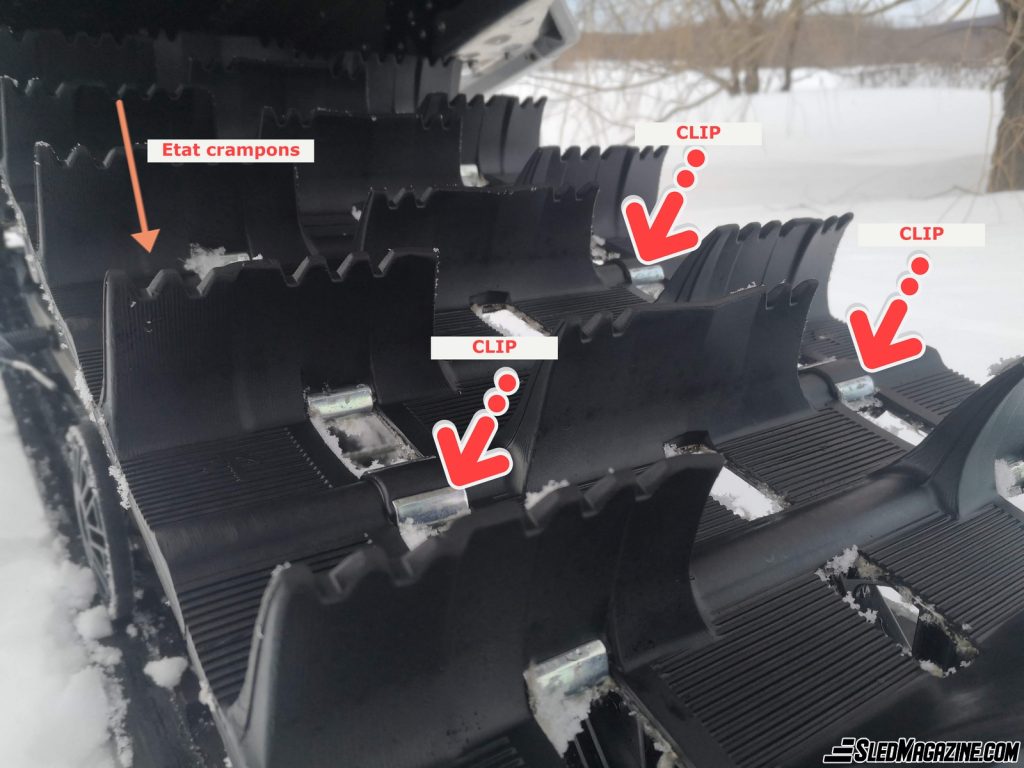
- Ensure that the track studs are present.
- Check for cracks or tears in the track.
- “Clips” should be present at each step or every other step.
- If there are metal screws on the studs or in the body of the track, ensure they are in place. If they have been removed, inspect for tears in the track.
Slides
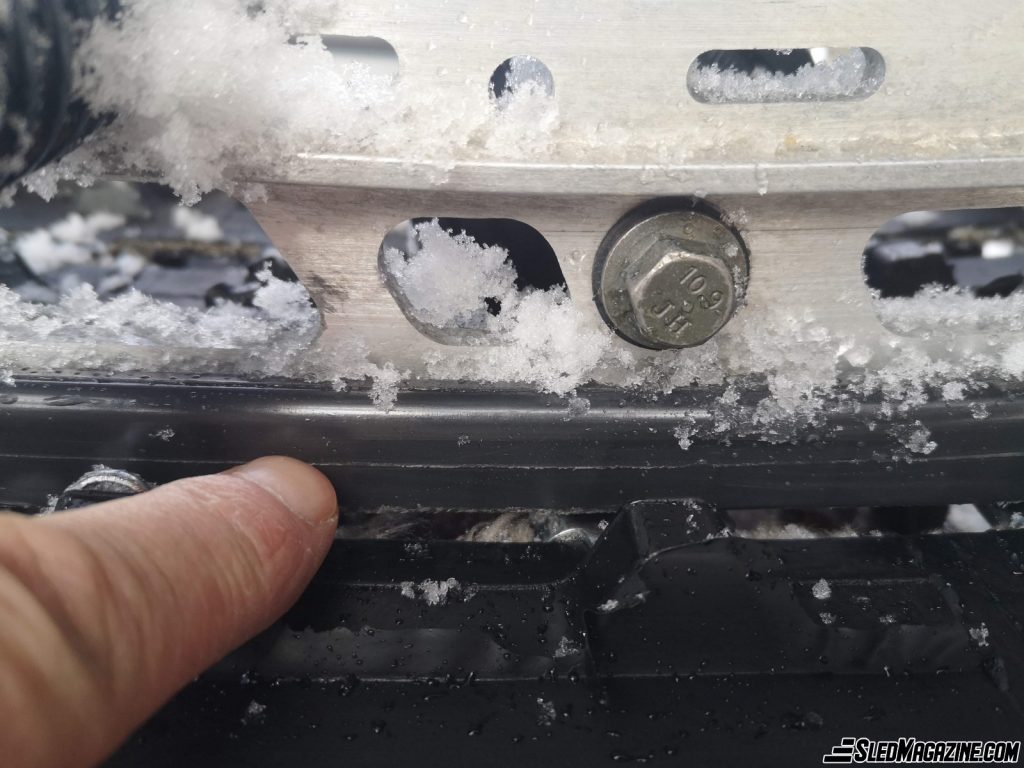
- Identify the wear line on the side of the slide. If it’s no longer visible, there may be damaging to the bridge rails.
Wheels
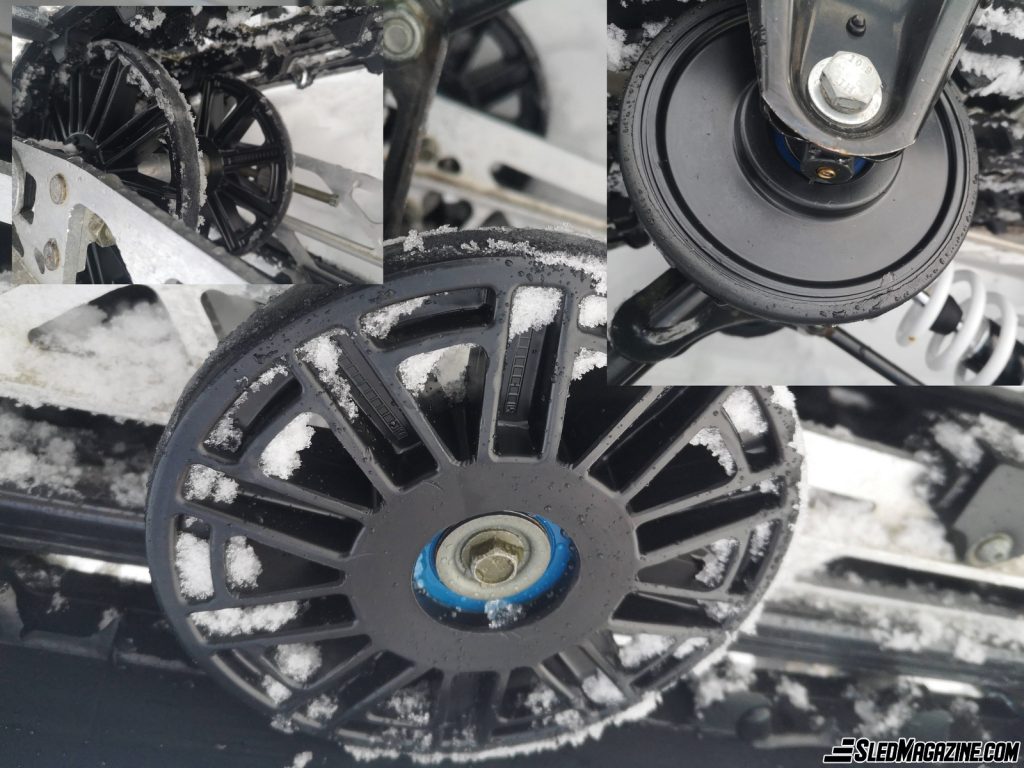
- For those accessible, manipulate them manually to check for excessive movement. If they have too much play, the bearings need replacement.
- Check if the bearing seals are still in place.
- If you cannot manipulate them, observe if they are straight.
- During the snowmobile test, ensure they are not bent and rotate correctly.
The Chassis
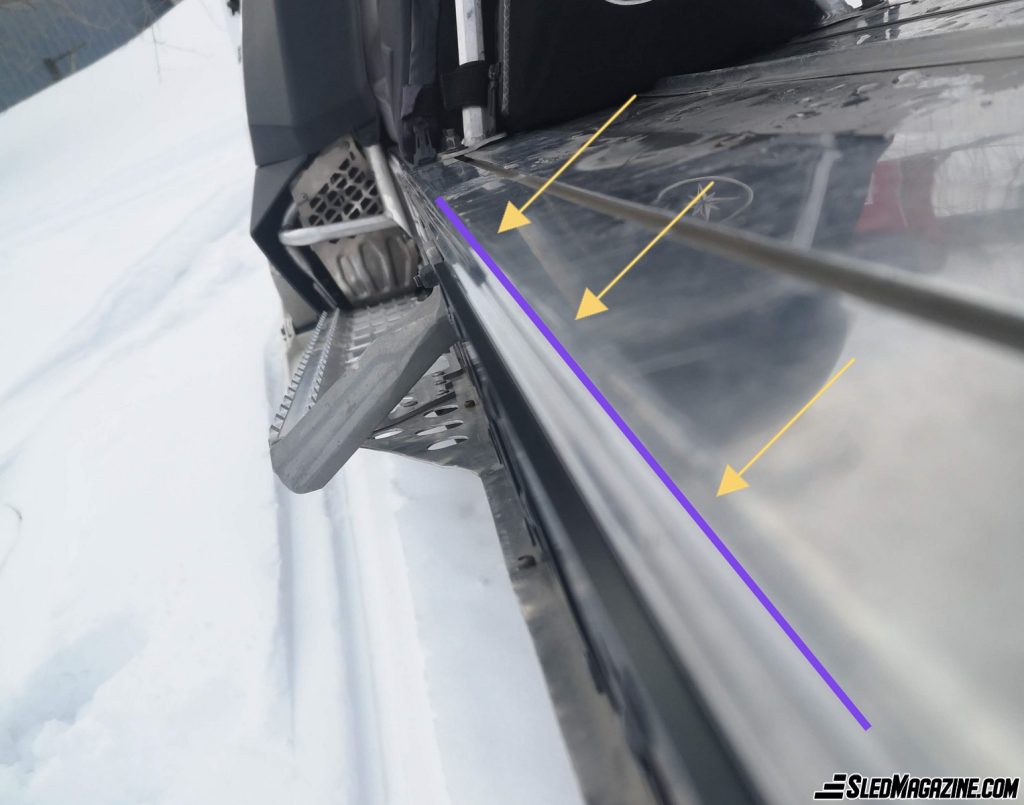
- Look on both sides of the tunnel from the rear to get a precise idea of the chassis shape. Search for signs of chassis bending.
- Regarding the rivets, ensure they are all in place and securely fastened.
Radiators (for liquid-cooled snowmobiles)
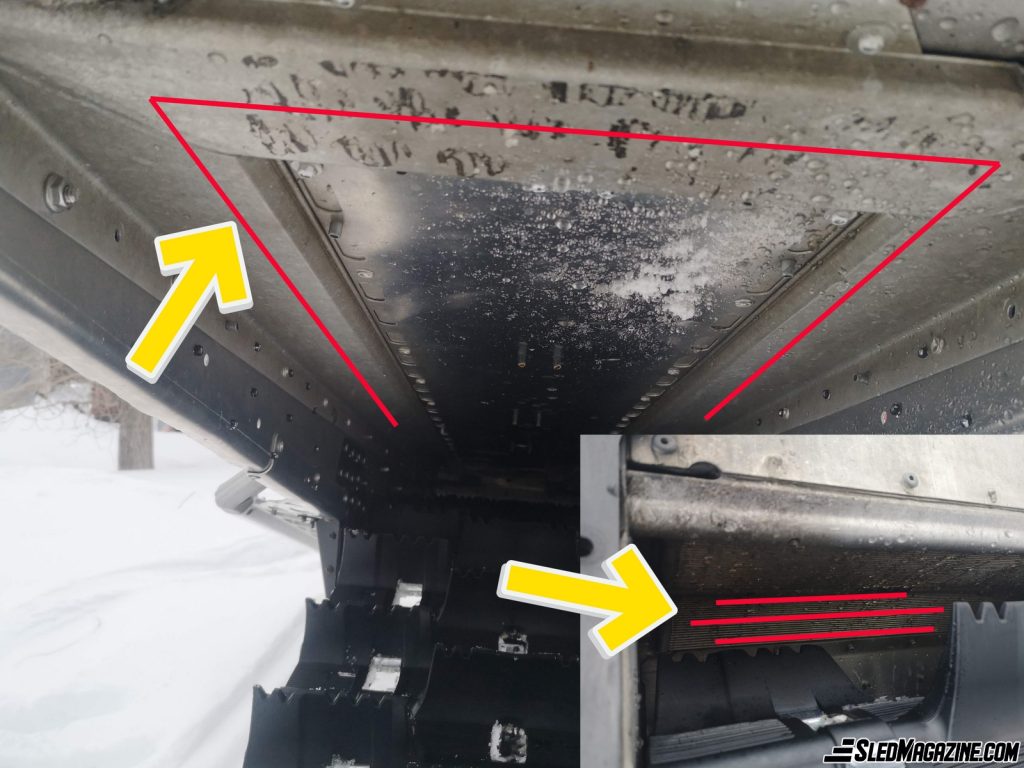
- Typically positioned in the tunnel, check for damage or leaks.
- Some models have a radiator at the junction of the engine compartment and the tunnel.
- Sometimes, they are located at the front of the snowmobile.
Buying a Used Snowmobile—What You Need to Know
If the snowmobile is not too old, note the serial number and inquire with your dealer about applied service bulletins or any pending ones. You can also ask the seller for repair invoices.
Be cautious of deals that seem too good to be true. Many sellers claim the engine has been reconditioned; ask for tangible proof.
Demand registration documents or a receipt if necessary.
Conclude a Detailed Sale Contract—Elements to Include
Establish a sales contract with the seller, including as many details as possible, such as names, addresses, phone numbers, make, model, mileage, accessories, condition, etc.
This guide is generic; adapt these tests according to your skills.
If you don’t feel comfortable, seek the advice of a trusted person. Conducting the visit with a companion is practical, and in some cases, two heads are better than one.
Remember that purchasing a pre-owned snowmobile should be an enjoyable experience. Trust your first impression; sometimes it can help you decide to buy or decline an offer. Don’t hesitate to negotiate.
Happy buying!


